Jakarta – Victorious and Great: Symbols of liberty
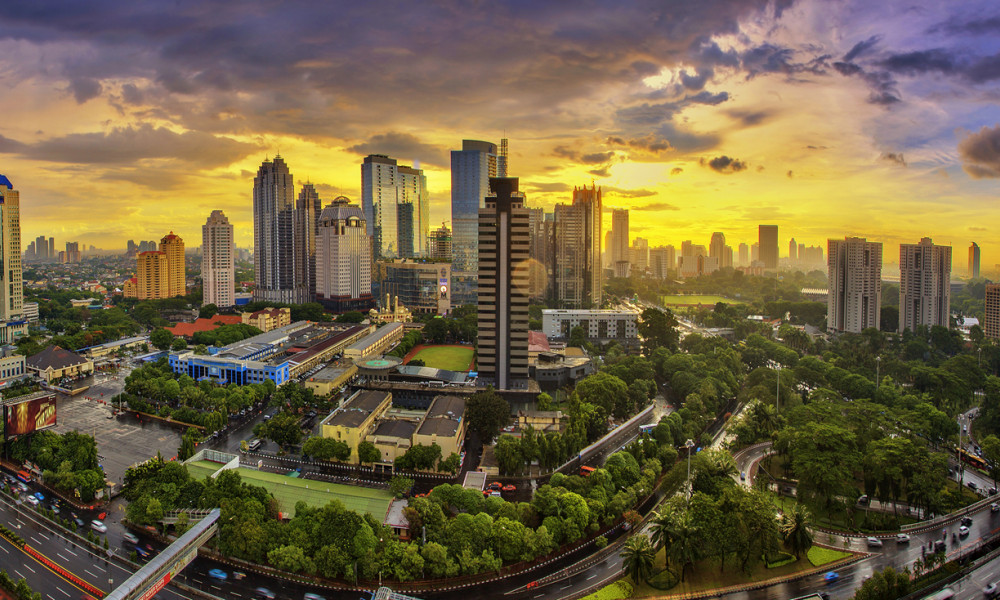
Taking into account complicated Indonesian way to aspired freedom, we felt like exploring those very landmarks of the Victorious and Great (that’s hjow the name translates from Indonesian) that have become symbols of this achievement.
It is uncertain when exactly history of Jakarta began. But initially this settlement was called Sunda Kelapa. Its first mention as the capital dates back to 4th century – times of Indonesian kingdom Tarumanagara. Nevertheless locals celebrate the Day of their town on June 22, counting since 1527. The thing is that an important historic event is connected to this date, the one that established Jakarta as the central point of Indonesian cities, significant in the fight of this nation against colonists. It was on this day when local troops of Sulatn Demak vanquished the Portuguese who had previously seized those lands intending to found own fort there. It was then when Sunda Kelapa started being referred to as the city of victory. However Indonesians weren’t destined to enjoy freedom for a long time. In less than a hundred years the area was under siege of British colonists and after that almost completely destroyed by the Dutch. The latter ones built there houses to own taste and style (one of districts of modern Jakarta is even called Little Amsterdam – so bright the mark of this culture is there). They even had effrontery to rename the city in honor of own ancestors, the Batavi – into Batavia. This process lasted for over three centuries. In 1942 the city passes under authority of another avid conqueror – of Japan. But as soon as six years later Indonesia gained independence and then Jakarta regained its status of the capital as well as got back its Indonesian name.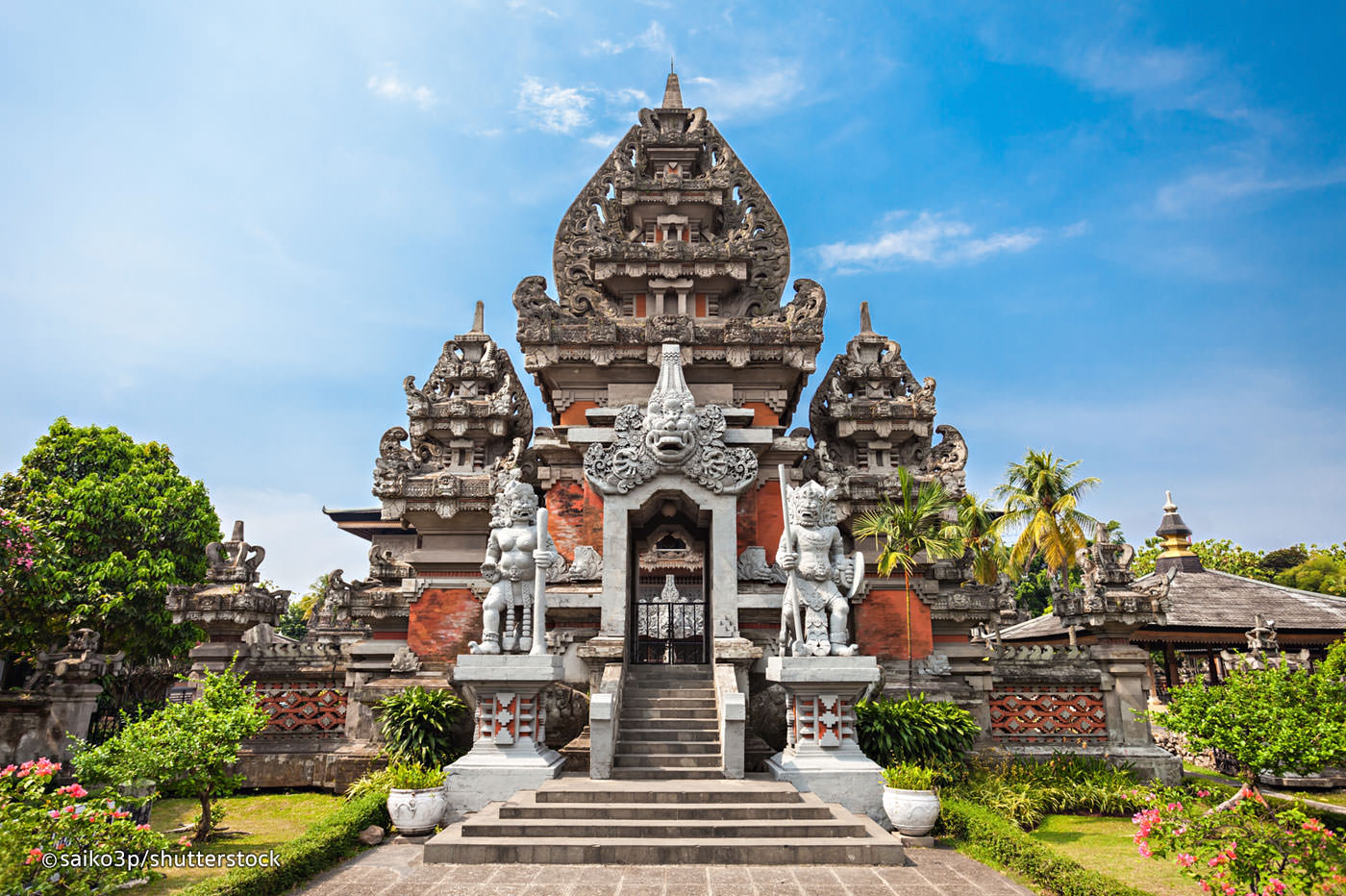 Photo indonesia-holidays.com
Photo indonesia-holidays.com
Indonesia is located in the South-East Asia. Jakarta is situated on the North-West coast of Java Island. There Ciliwung River flows into Java Sea, the city is striped with numerous large and small water basins. As wonderful as it is in terms of aesthetics, but in reality it often suffers from spates and floods.
Local climate is very warm and humid. Therefore in order to explore landmarks of Jakarta it is better to pick either morning or evening, because a rare tourist can stand local heat at noon. It is better to get through it at picturesque beaches, located on islands opposite the city, with their clear sea and gold sand; one can get there in a matter of minutes using rented boats.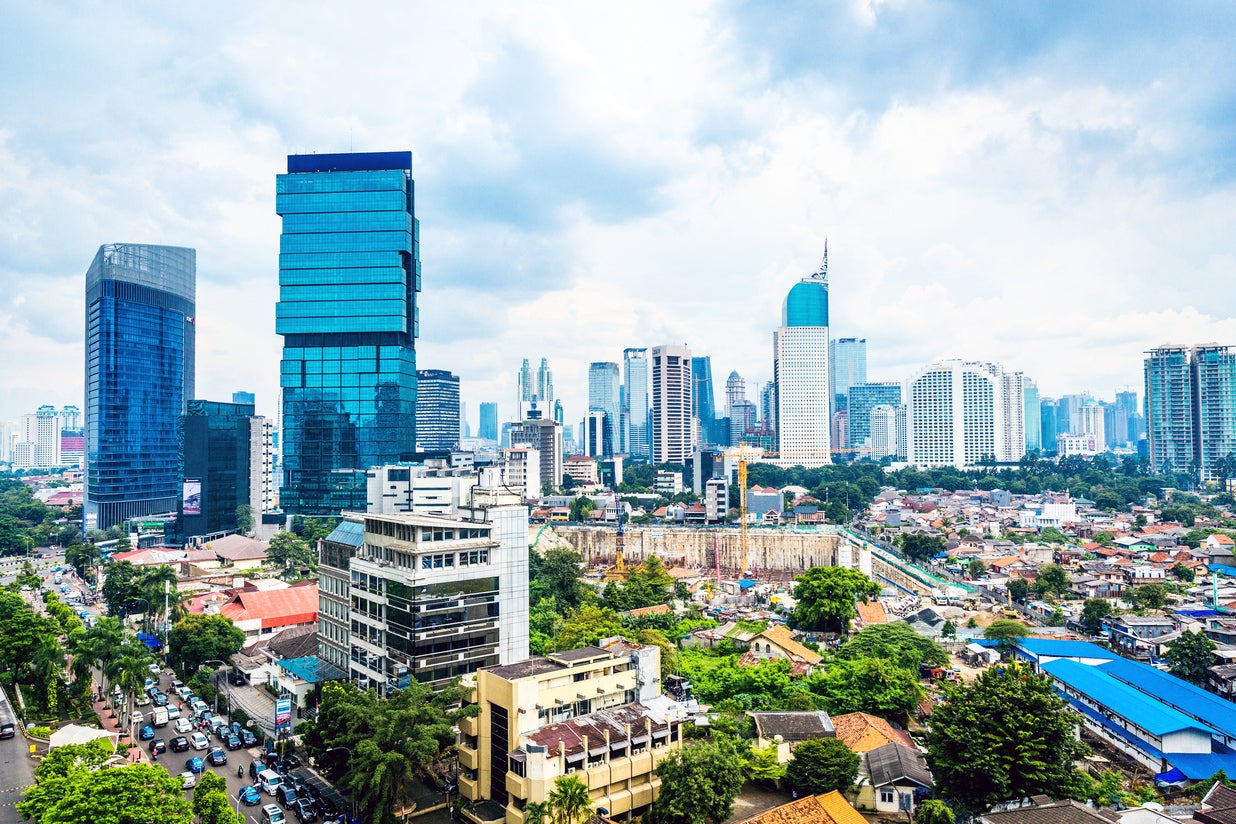 Photo independent.co.uk
Photo independent.co.uk
There are numerous temples there, mainly Buddhist and Islamic, spreading parks, beautiful palaces and also other, modern entertainments. It will just suffice to mention, for instance, Ragunan Zoo with tropical park, birds park, pools and restaurants – a place for fun family time. Or Ria Remaja in modern spirit: aquariums, lagoons for boat trips, bowlings, night clubs and an open-air theatre. But the spirit of the country shows itself in other things…
Sure enough the first thing that a tourist, who has just arrived at the city, should have a look at is the National Monument for independence.
Main symbol of Indonesia is located on the central square of Jakarta – Medan Merdeka (Liberty Square). It is Cyclopean tower 132 meters high that by and large resembles a huge torch. Naturally, this severe yet majestic construction is crowned by the Flame of Independence – bronze sculpture mimicking body of flame. It is covered completely with gold – 33 kilograms of the precious metal to be exact. The fire on its top is surrounded with a viewing platform that is by all means worth climbing. It commands a great view of all the beauties.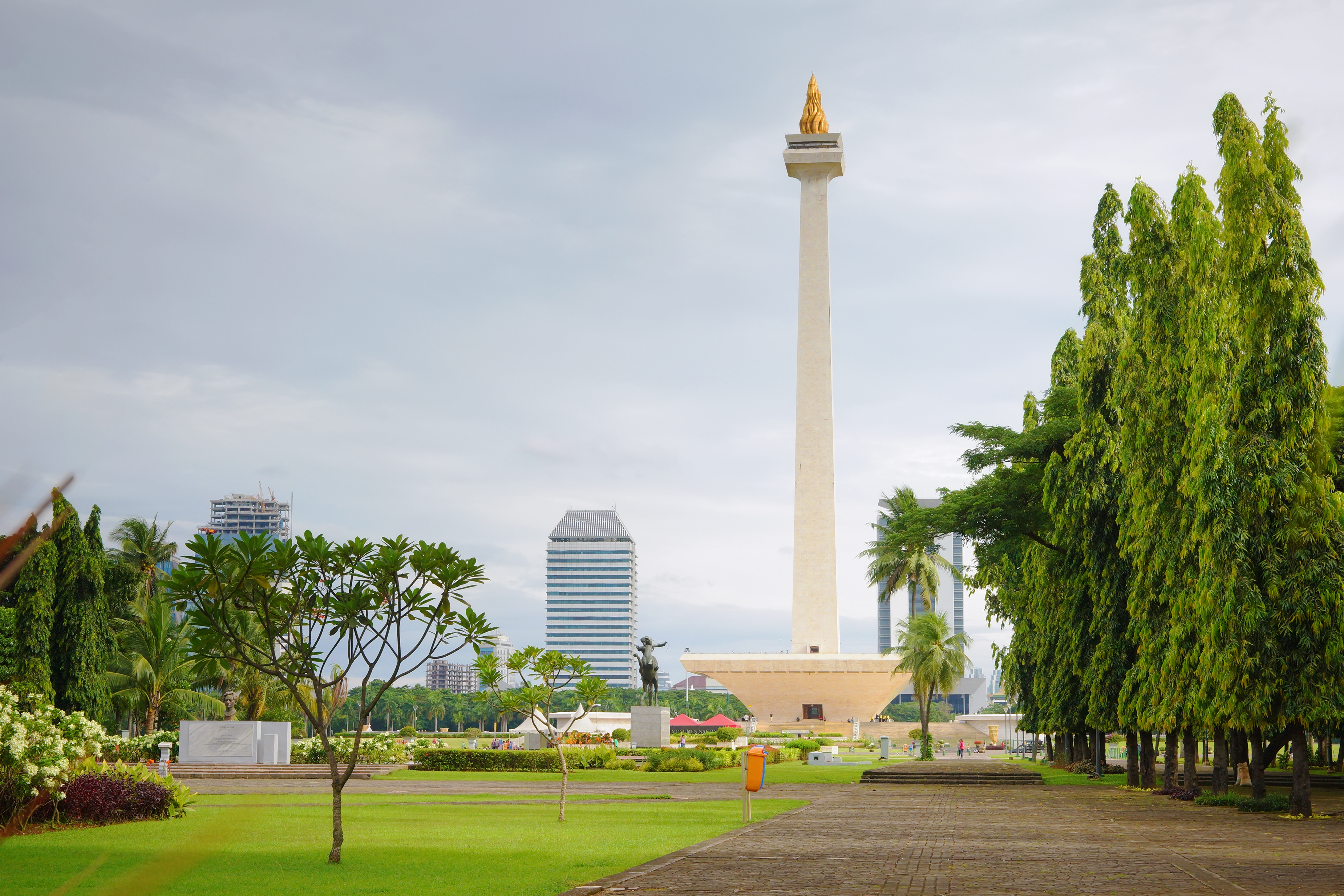 Photo trip.com
Photo trip.com
Interestingly: the thing that looks like a torch at first glance in fact objectifies philosophy of unity of linga and yoni. Those are symbols of mergence of male and female principles that originated in ancient Indian mythology. They were developed in trends of Hinduism and soundly asserted themselves in Shaivism.
In lower part of the monument there is the National History Museum of Indonesia. It is recognized as one of the best in South Asia thank to richness of its collection – 62 thousand artifacts (among them anthropological exhibits) and 5 thousand archeological artifacts that originated not just in the country but in entire Asia. Older wing of the museum is commonly referred to as the Elephant Building – a cute bronze statute of the animal is located by its entrance. There are over 50 large-scale diagrams reflecting historic events inside. In possession of the museum there also are archeological and ethnological collections. And second wing, new one, was nicknamed the Statue Buidling – numerous statues of different eras are presented there.
Naturally, in times of colonists Islam was subject to oppression. Historically, Buddhism had been professed in these lands but in 12th-15th century spreading of Islam commenced, it took roots and caught fancy of locals. So one can say that Indonesia is autochthonous Islamic state – same way, for instance, Ukraine is orthodox though it saw pagan period. In 16th-19th centuries Islam got under oppression in Indonesia because of missions of the Portuguese, who forced Catholicism, and the Dutch with Protestant ideals.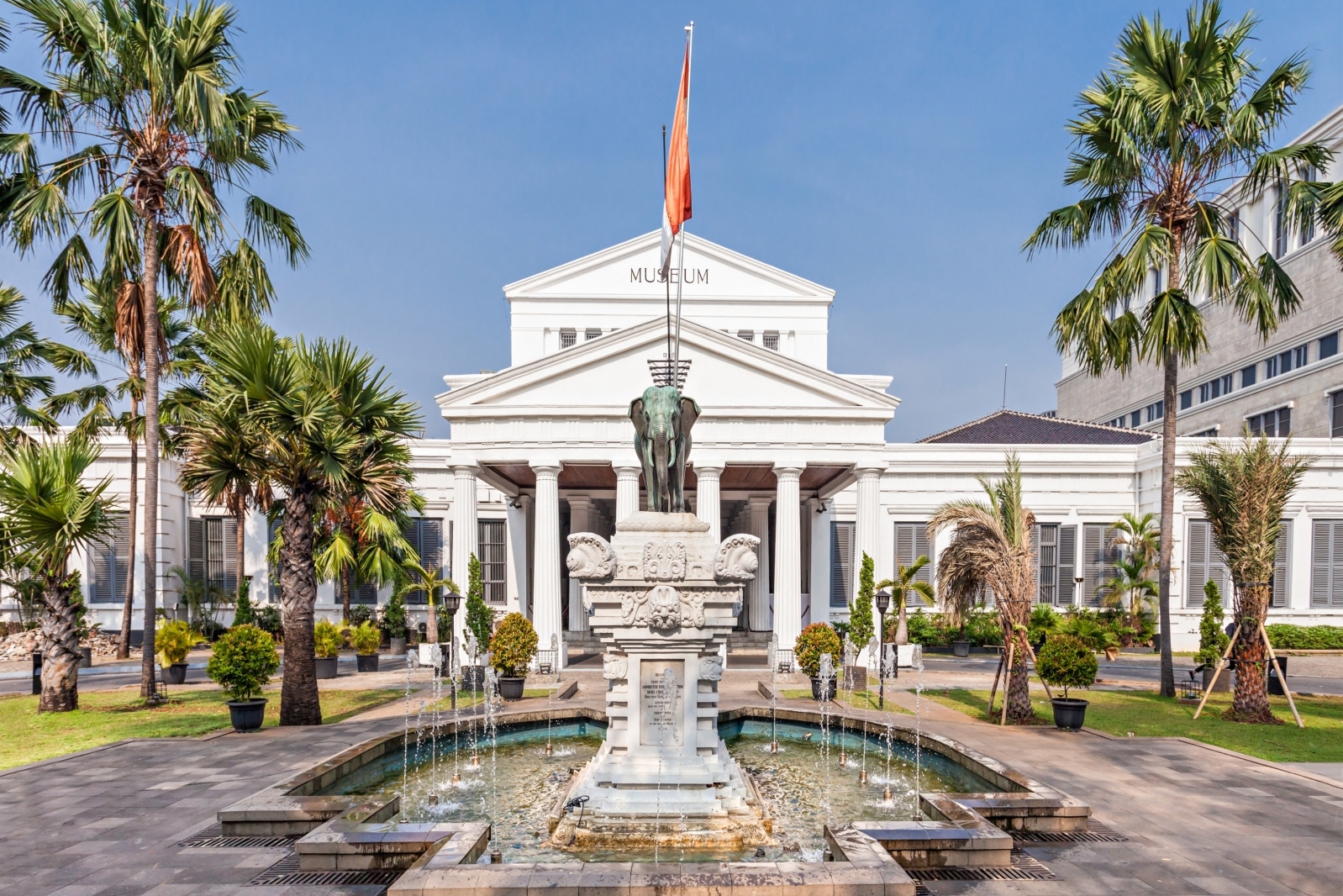 Photo lonelyplanet.com
Photo lonelyplanet.com
But one cannot forcefully stop live aspirations of people. Besides, Islamic institutions that took roots on largest islands of Indonesia – Java and Sumatra – helped indigenous population fight against colonization. Currently this religion is professed by over 85% of population – that is about 200 million people. Therefore Islamic religion became one of the symbols of fight of Indonesians for independence. Also, in honor of independence of the country 1978 Istiqlal was erected – the largest mosque in South-Eastern Asia. The name itself was borrowed from Arabic language and translates as “independence”. Thus Indonesians showed their gratitude to god for benevolence of the people in its fight for national liberty.
Among mosques of the world Istiqlal ranks 3rd in size – imagine, it can accommodate about 120 thousand pilgrims. This architectural construction impresses with majesty and beauty. Main prayer buildings represent rectangular premises. In their centre there are metal constructions of names Muhammad and Allah. High 45-meter dome covers main section of Istiqlal and rests on 12 columns, covered with aluminum. And in front of it there is ante-hall with another huge dome, its diameter being 10 meters. Photo asean.travel
Photo asean.travel
As to interior decoration, it is performed in minimalistic stylistics. As to setting – there are only small amounts of geometric elements made of same aluminum.The mosque is located opposite another symbol of independence of Indonesia – Presidential Palace erected in 1876. Currently it is the official residence of the President. Indonesians call it Istana Merdeka that literally translates as the “palace of freedom”. In front of it cozy square are spread with various monuments surrounded by cozy parks. This area is closed for automobile transport therefore it warmly welcomes tourists for deliberate walks and enjoyment of ancient architecture.
All these landmarks are located in Central Jakarta while Western part of the city is so-called Old Jakarta. It is referred to as Kota Tua among locals. Sure enough, exploring of independence symbols of Indonesian capital without visiting this district wouldn’t be complete. It currently occupies small territory and is mainly based in the old dock where dawn of Jakarta began – small trade centre gradually got overgrown with various constructions thus turning into a huge city. Nowadays Kota Tua is under protection of UNESCO this is why all the buildings there have preserved their original look. Truth be told, charm of ancientness in Old Jakarta is greatly spoiled by time and exhausting wet climate of Indonesia, but in my opinion this only adds color to it.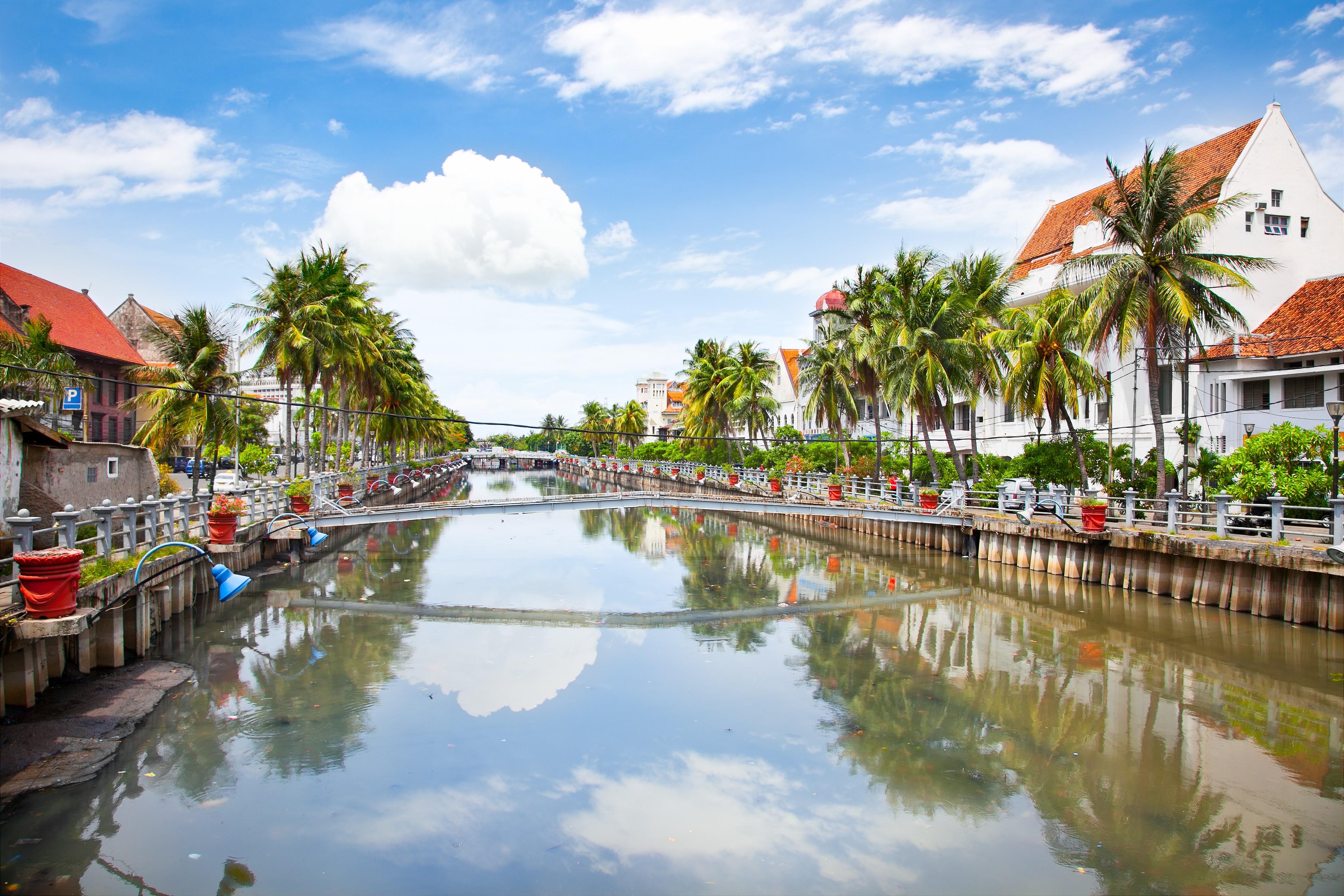 Photo arrivalguides.com
Photo arrivalguides.com Photo wandernesia.com
Photo wandernesia.com
There is no doubt that colonists have left their imprints in architecture of this settlement. Therefore examples of architecture of various cultures and eras peacefully co-exist there, though alien inclusions to Kota Tua are insignificant. Therefore it is believed that it is in Old Jakarta where a tourist can sense true spirit of Indonesia and its people. Particular chic of this place is inexplicable and mesmerizing. There is a good reason why this district is called Diamond of Asia and Queen of the East though there is no such splendor like for instance in UAE.
Cover photo travelingyuk.com













